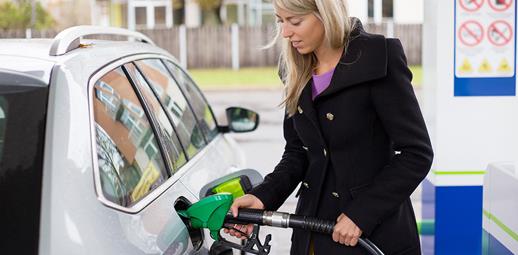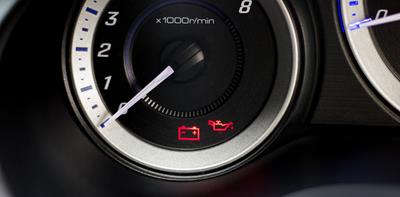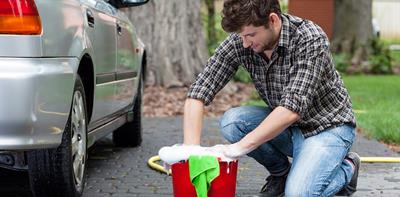
Petrol and diesel prices reached record highs in 2022, as drivers paid around 191.5p per litre for petrol and 199.09p per litre for diesel. Although prices have since fallen, they’re not much better today.
To help you save on running costs, you need to look at ways to reduce your vehicle’s fuel consumption. Here are 12 ways you can maximise fuel efficiency and save costs.
EASY AS HACK
Slower driving means cheaper journeys. According to the AA, driving at 70mph uses up to 9% more fuel than at 60mph and up to 15% more than at 50mph. And taking it up to 80mph can use up to 25% more fuel than at 70mph. You also need to consider what speed is safe on any particular road.
At a glance
- Adapting your driving style to be more fuel efficient can help you cut down on fuel costs
- Planning your journeys, reading the road and slowing your speed can all help you to use less fuel
- Small tasks like emptying your car of heavy items, closing windows and removing roof racks can also improve fuel efficiency
When will your vehicle use more fuel?
It’s important to understand how and when your car uses more fuel. Once you do, you’ll be able to take the right steps to reduce fuel consumption.
Your car uses more fuel when:
- Tyre pressures are low – It takes a lot more fuel to power a car forward with under-inflated tyres than correctly inflated tyres. Keep tyres properly inflated for maximum fuel efficiency.
- Using the wrong engine oil – Your car has to work harder to pump thicker oils around the engine, which increases the amount of fuel used.
- The AC is turned on – Air conditioning requires a lot of power and can seriously affect fuel economy. In general, it's more fuel efficient to drive with your windows open than with the air conditioning on, especially at lower speeds.
- Taking short trips – If you’re driving in the city and frequently stop and start, your engine will have to accelerate more often and use more fuel.
- You’re waiting around – If you leave the car idling while you’re on the school run for example, the car will be burning off expensive fuel and adding to your poor fuel economy.
Tips to reduce fuel consumption
You can decrease fuel consumption by following these simple steps:
1. Ditch extra weight
The heavier your car, the harder it has to work. On average, every 50kg will increase your fuel consumption by 2%.
To reduce fuel usage, ditch extra weight by removing heavy items from your boot that you don’t really need.
2. Reduce drag
Your car has to work harder and use more fuel when up against unnecessary wind resistance. Reducing drag by removing roof boxes or bike racks when you’re not using them can help to minimise fuel usage and cut costs.
3. Keep up with basic maintenance
For maximum fuel economy, it’s important that you take the time to keep your car well maintained and have your vehicle serviced regularly.
Make sure you’re always using the right engine oil, clean the air filters and check your tyre pressures regularly as under-inflated tyres will reduce fuel efficiency.
4. Turn off the air con or heating
Only turn on air con and heating when needed. This will avoid putting a strain on the engine and burning more fuel. And don’t forget that at higher speeds you should close your windows.
5. Don’t engine idle
If you drive a modern car with stop-start technology, which cuts the engine when the car is stationary, you can save on fuel consumption by keeping your foot off the clutch in a manual car.
Don’t forget that it’s also illegal to leave your engine idling while stationary on a public road.
6. Buy a more fuel-efficient car
According to the Department for Transport, the fuel consumption of similar-sized cars can vary by as much as 45%. Doing your research and choosing the most fuel-efficient car in its class, rather than one with average emissions, can reduce overall fuel consumption by up to 24%.
5 top tips for fuel efficient driving
1. Read the road
Reading the road ahead is one of the easiest ways to improve fuel efficiency. Look far ahead when driving and anticipate obstacles or changes in gradient. That way, you can ease off the throttle rather than slamming your foot on the brakes.
2. Plan your journeys
Who wants to sit in traffic anyway? If you can, plan your route to avoid busy sections of road, especially at peak times, and to ensure you don’t get lost.
Got lots of errands to run? Where possible, do one long trip rather than several short ones to avoid starting your engine from cold too many times. According to fuel-economy.co.uk, a cold engine will generally use twice as much fuel as a warm engine.
3. Slow down
Your fuel usage will increase the faster you drive (due to increased air resistance), so where it’s safe to do so, try to slow down.
According to the AA, driving at 70mph uses up to 9% more fuel than at 60mph and up to 15% more than at 50mph. And taking it up to 80mph can use up to 25% more fuel than at 70mph.
4. Accelerate gently – and don’t slam the brakes
Aggressively accelerating or breaking can use up to 60% more fuel.
In normal conditions, changing down your gears rather than slamming on the brakes helps conserve fuel and make your overall journey more fuel efficient.
5. Keep your speed steady
In some situations, cruise control can help lower fuel consumption. But bear in mind that it only aids fuel economy when you’re driving on a constant flat surface.
Remember, you must remain in control of your vehicle at all times. Even if you’re using driver assistance systems, you are ultimately responsible for the car.
6. Drive in a higher gear
Change to a higher gear as soon as it’s possible and safe to do so. The Department for Transport recommends diesel drivers try changing up a gear before the rev-counter reaches 2000 revolutions per minute (rpm), and petrol drivers do so before 2500rpm to keep your driving fuel efficient.
Find out more about our car insurance.


